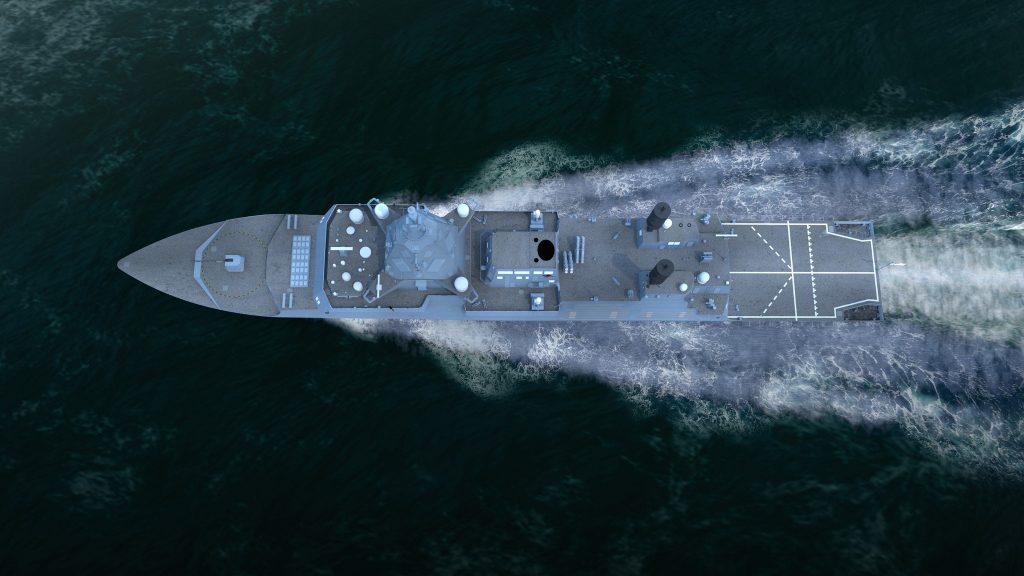
The Australian National Audit Office’s recent report on the Hunter-class frigate program contained a number of significant revelations, but one of the most striking was the statement by the surface ships advisory committee that the government ‘clearly understood that they were selecting an approach that was highest in risk … with respect to design maturity (whilst also highest in potential for capability/performance)’.
There have been suggestions that this statement, when combined with other information in the report, indicates that the government made the wrong decision in selecting the Type 26 as the reference design. I am far from certain of that, because we have no indications of the perceived capability advantages and the degree to which they balanced out the costs. This statement does, however, focus our attention on the concept of risk.
The Defence Department’s decision to recommend the option with the greatest potential capability but also the greatest risk shouldn’t come as a surprise. In the 1980s, during the procurement of what became the Collins-class submarine, the Royal Australian Navy was determined to have the most advanced submarine it could persuade the government to buy. In their book, The Collins class submarine story, Peter Yule and Derek Woolner say the RAN wasn’t looking for a conservative, risk-free design, but ‘something at the leading edge of technology—not a production-line Volkswagen but a custom-made Ferrari’.
All the information we have on the decision to adopt the French design for the now-cancelled Attack-class submarine program in 2016 suggests that it was driven by a similar focus on perceived capability over all other factors. The same could be said of Australia’s planned acquisition of nuclear-powered submarines under the AUKUS arrangement.
The issue of risk in the Hunter program was the subject of a testy exchange at the Senate estimates committee hearings in February. In the end, Sheryl Lutz, first assistant secretary for major surface combatants and combat systems at Defence, conceded that it is a high-risk project. ‘We are being open with our risks in the major project report,’ she said. ‘Nothing’s being hidden.’ This answer goes to the heart of a problem with the current approach. While Defence has been open with at least some of the risks in this project, the admission that there are risks, and the fact that there’s a list of risks in the ANAO’s major projects report, don’t do much to mitigate them.
Responding to questions at the hearings, Defence officials made much of the processes being put in place to manage risks. However, as the department has acknowledged, a major source of risk has always been the immaturity of the parent design, something that was baked in from the moment the decision was made to go with the BAE Systems option.
Another notable point raised by the ANAO report into the Hunter class was that there were ‘insufficient resources, particularly skills and expertise in the project team’. While it’s unclear whether the significant personnel demands of the nuclear-powered submarine taskforce has affected the Hunter program, it’s apparent that Australia is embarking on an extraordinary range of high-risk and demanding naval construction and maintenance projects. These include the Collins life-of-type-extension and the Anzac transition capability assurance program. They are very significant projects in their own right but have been almost entirely overshadowed by megaprojects such as the Hunters and the AUKUS SSNs.
This suite of programs will be incredibly demanding on very limited human resources, something that’s compounded when risky projects begin to go wrong. The experience of the Hunter program, together with the challenges facing Australian naval construction, point to the need for a careful evaluation of risk not merely within projects, but across the full spectrum of naval procurement and sustainment, from initial conception through to delivery.
This leads us to the independent review of the RAN’s surface combatant program that was announced as part of the defence strategic review. Since that announcement there has been much discussion about the focus of the review and the potential for new platforms such as corvettes to be acquired. The discussion of the scope of the review has centred on the need to increase numbers and lethality and to align the surface fleet with the new SSN capability. The review would also do well to carefully consider the balance of risk within the RAN’s acquisition and sustainment program.
While it may look desirable to acquire as many complex, high-capability platforms as possible given the deteriorating strategic situation, we must acknowledge the compounding factors of Australia’s challenging approach to naval procurement, and the country’s limited capabilities to ensure that all of these projects are successfully managed and executed.
Options for de-risking include continuing existing programs without adding any new projects, limited Australianisation of military-off-the-shelf designs, acceptance of a lower-capability platform, reduced demands for Australian industrial content, and construction overseas. None of these options would necessarily be popular with those desperate to see the RAN and defence industry supported. However, in the world of naval construction the perfect is frequently the enemy of the good. There’s little benefit in having the surface combatant review outline a suite of new capabilities if they will never go beyond the drawing board.
British Admiral John Fisher famously cautioned with regard to shipbuilding, ‘Half a loaf is better than no bread—we strain at the gnat of perfection and swallow the camel of unreadiness!’ The RAN faces a real prospect of suffering exactly such a fate if the issue of risk is not carefully weighed up in the forthcoming decisions by the surface combatant review committee.